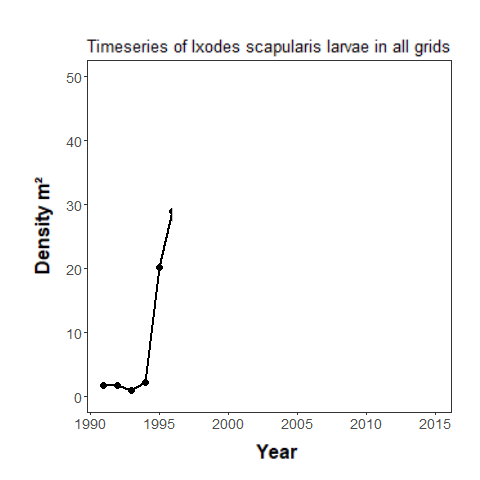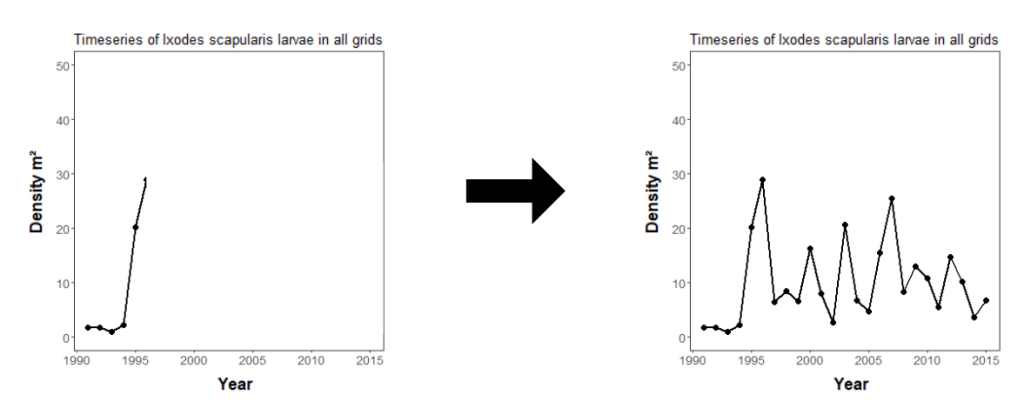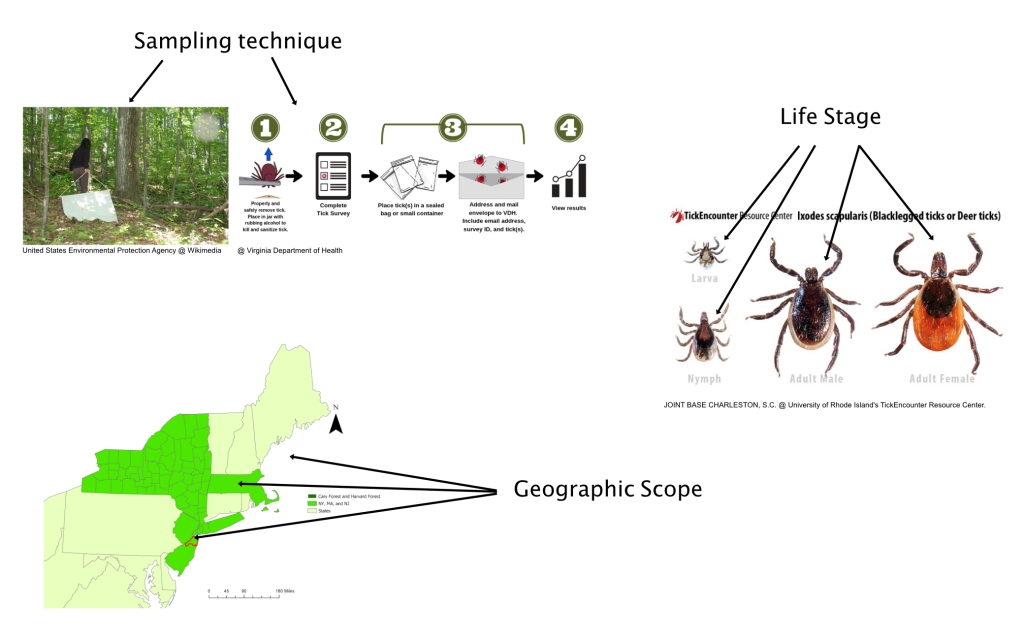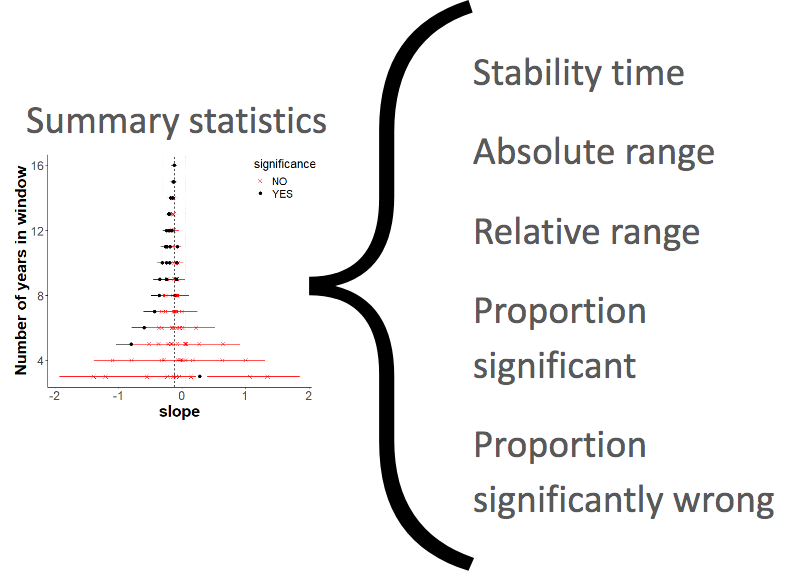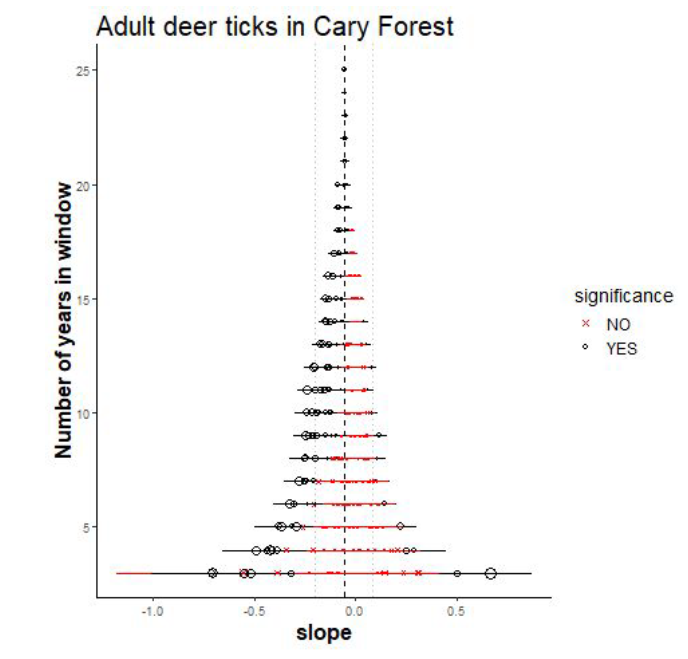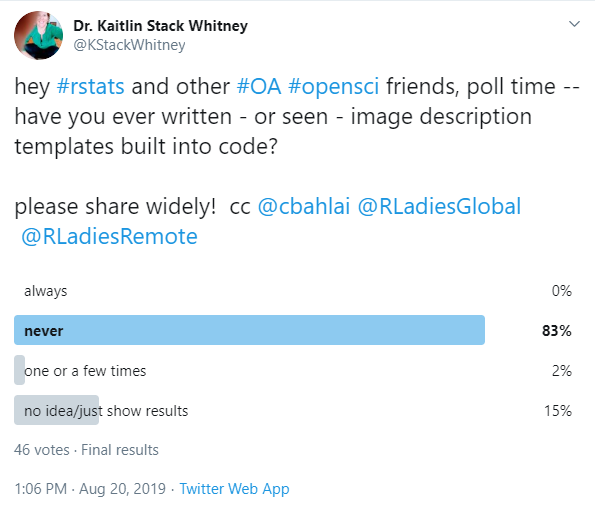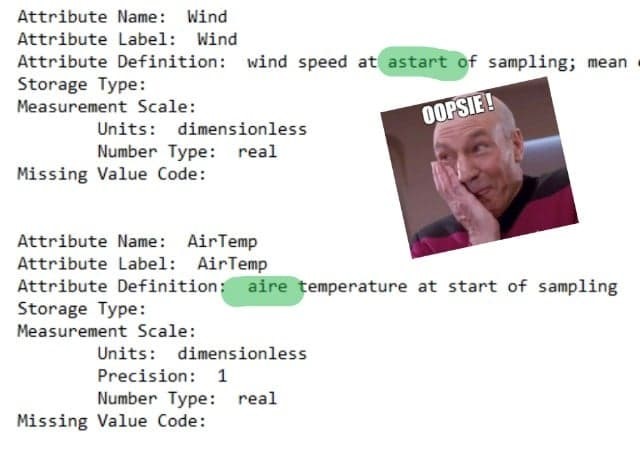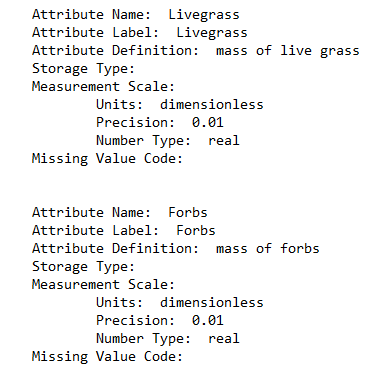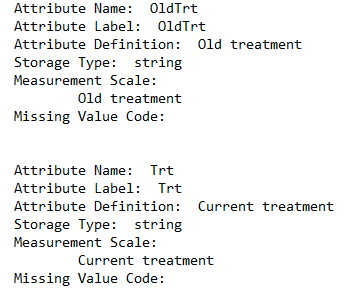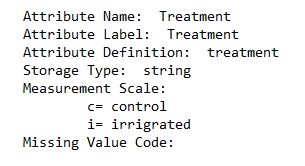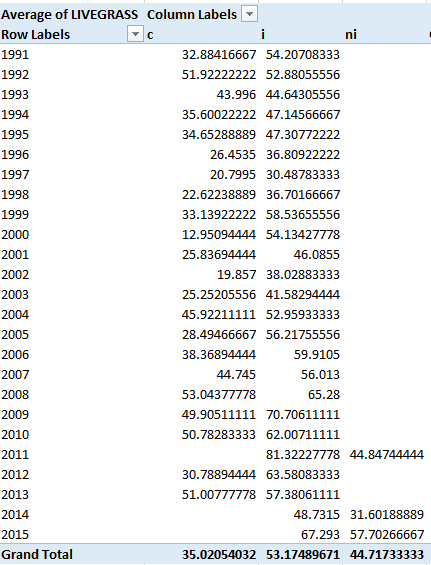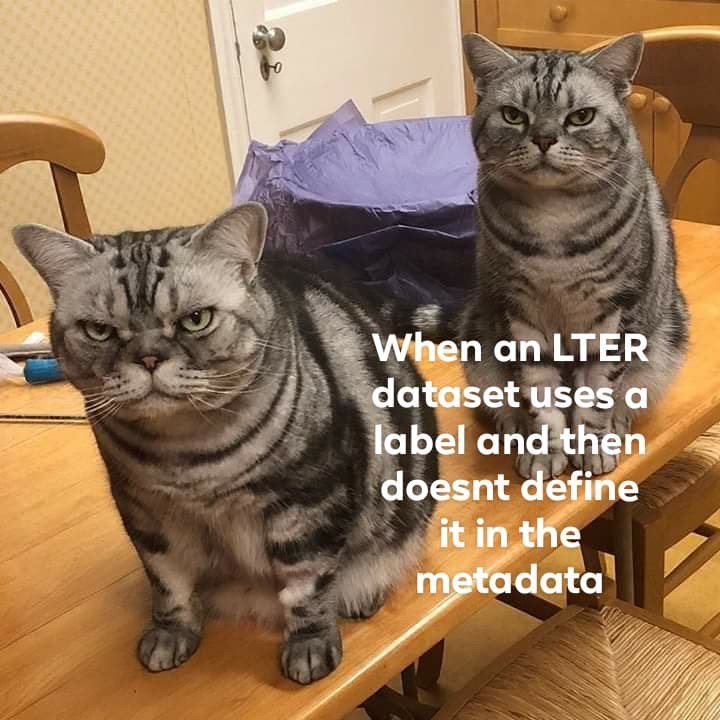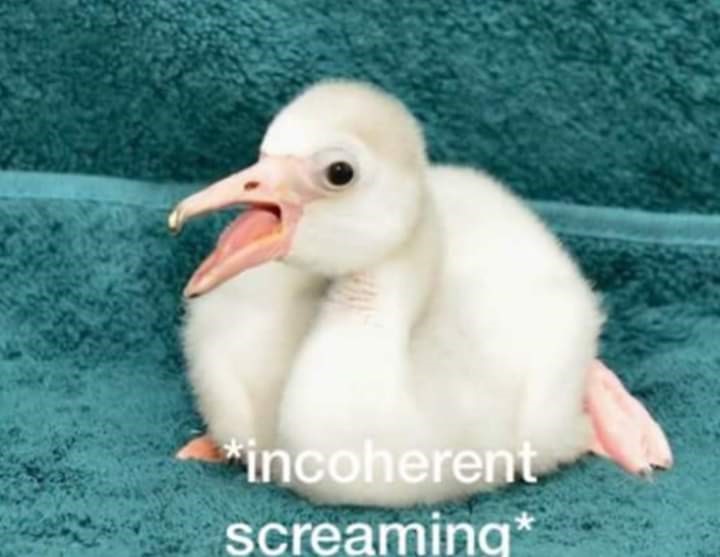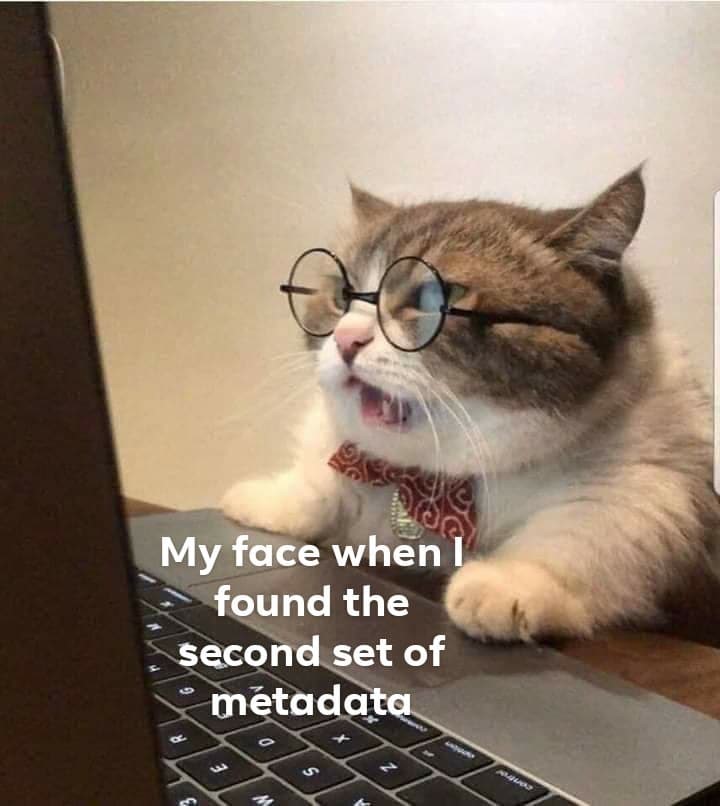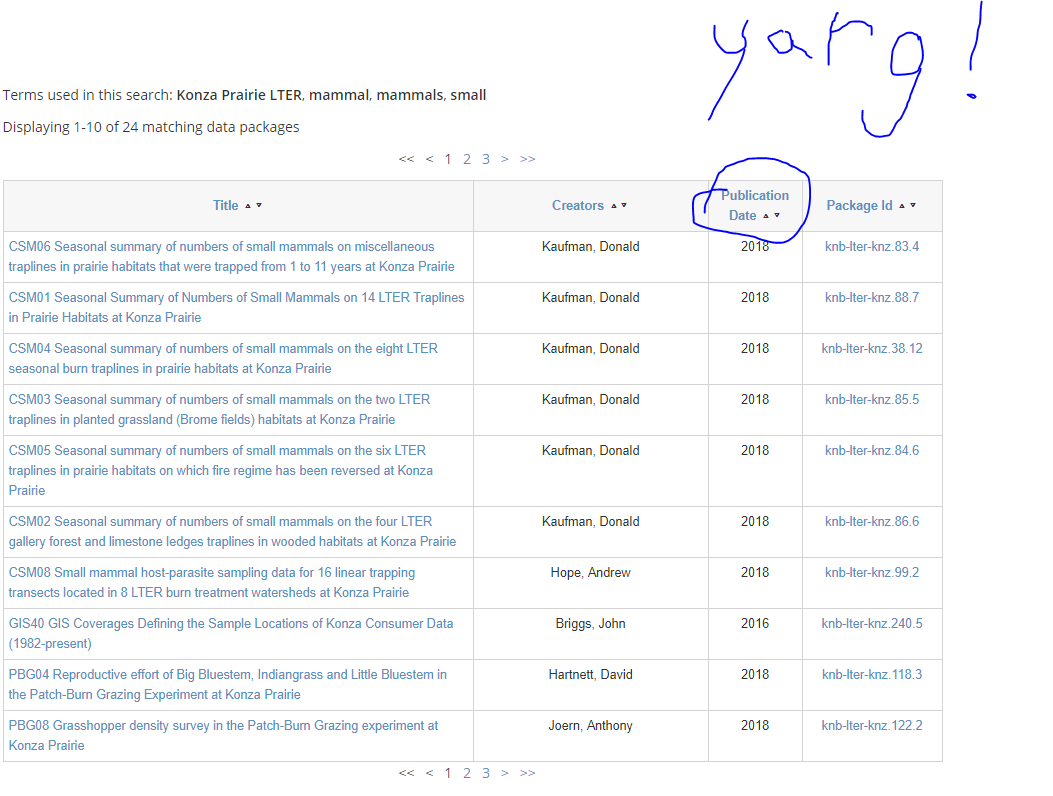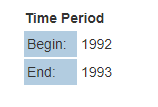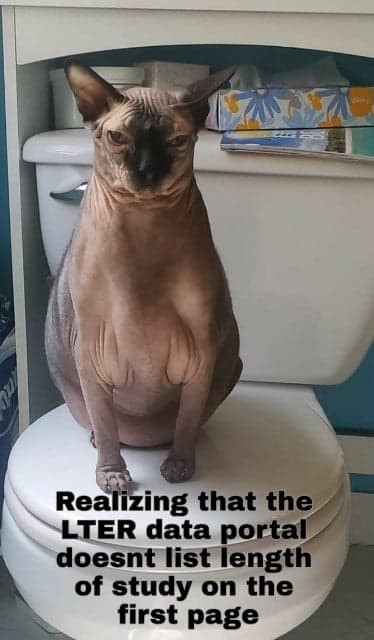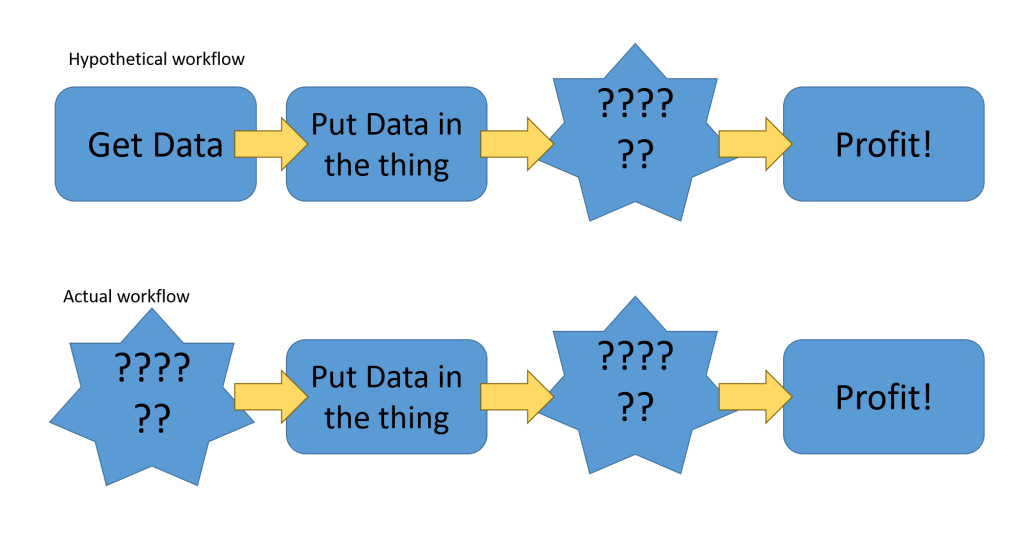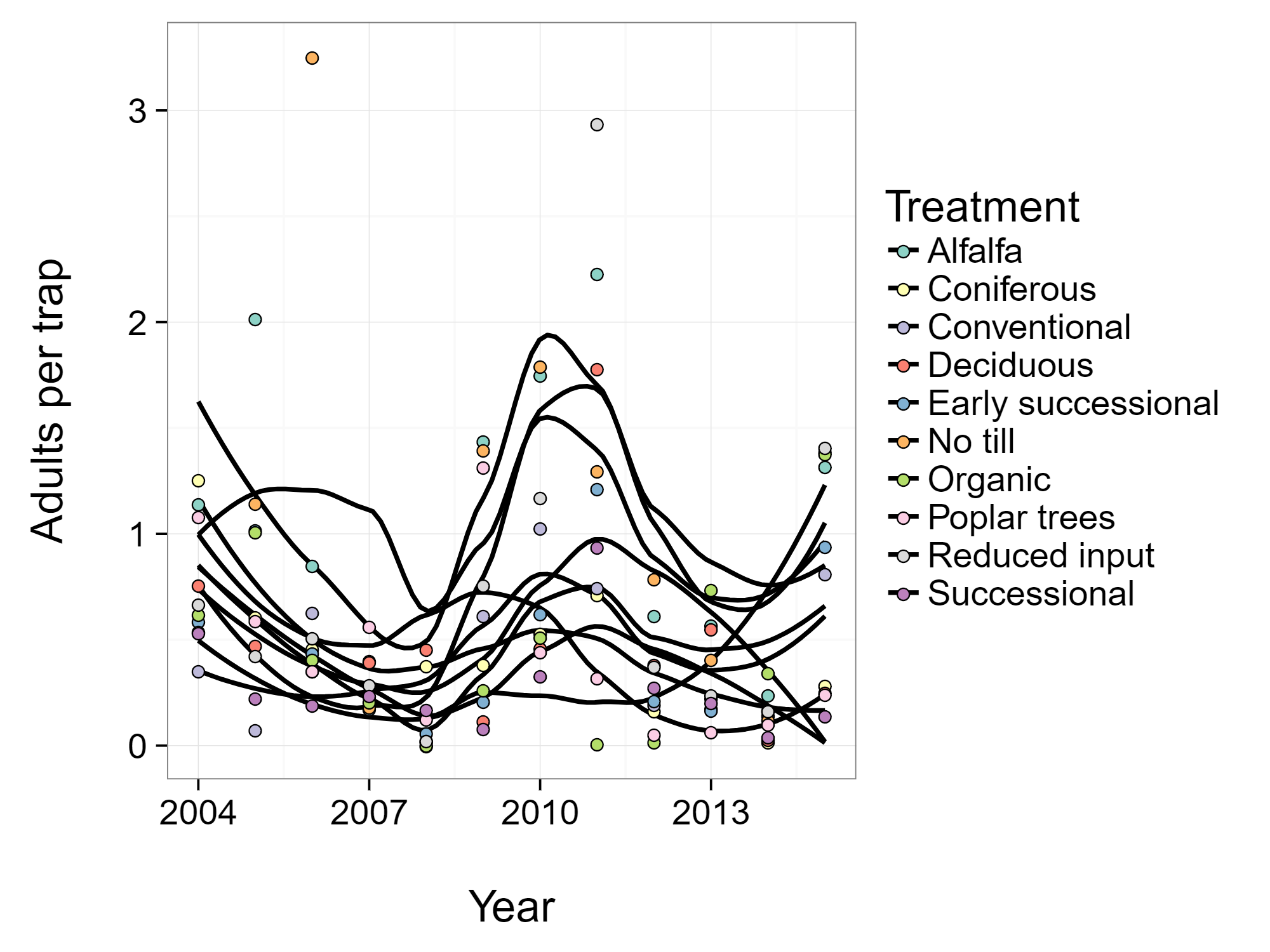Today’s post is a guest blog post by Jay Wickard, an undergraduate research student at Rochester Institute of Technology, who is working with the ‘Managing Our Expectations’ team this summer to examine accessibility (or the lack thereof) as a dimension of open and reproducible science.
Hey everyone, this past month I have been doing research on the different accessibility guidelines found in varying scientific journals. The one similarity connecting all of them, being that they are open access journals. These types of journals have been instrumental in fostering inclusivity within the scientific world, but are they as accessible as they claim they want to be? The term “accessibility” has multiple competing definitions, which inevitably leads to confusion. In many scientific circles, when you refer to accessibility, you are referring to the process of obtaining or accessing data. For example, saying “the data are accessible” might mean the data is posted online or that the data is available for no cost. This is often within the context of open access statements and policies, but this isn’t the only definition that we should be taking into consideration. Accessibility is also defined as being easily accessible to people with disabilities.
Just how many “Open Access Journals” provide disability accessibility to their readers? My research aimed to explore this question through analyzing the guidelines for submissions/authors and the open statement/vision sections of three hundred “open” scientific journals. My focus was on guidelines about image accessibility, such as including alt-text or image descriptions. These journals represented a wide variety of topics from across the world. I was specifically searching for guidelines that required things like alternative text, captions, legends, or titles for figures. I was also looking for image requirements that made mention of contrast, color, and things like size. Within the open access statements, I was looking for the mention of disability or accessibility as part of their conceived understanding of open science and inclusion.
While I wish I could say I was surprised with my findings, I have to admit that the lack of specific accessibility guidelines became a pervasive issue within my data set. Most of the journals within the dataset only included general image guidelines that focused on sizing and sometimes resolution of the images. When color choice was referenced it was either in relation to being accessible to those with color blindness, or in reference to a preferred color model typically being RGB. In the table below, one can see the extent of this amongst the journals in my dataset.
| Author / Submission Guidelines | Open Access Statements | |||||||
| Image Guidelines | Alternative Text | Image Contrast | Color Choice | Description (captions, titles, legends) | Access/ Accessibility | Disabled/ Disability | Inclusive/ Inclusion | |
| Journals With: | 213 | 0 | 6 | 38 | 139 | 228 | 0 | 2 |
| Journals Without: | 76 | 289 | 283 | 251 | 150 | 70 | 298 | 296 |
The journal that appeared to be the most accessible out of my data set was Living Reviews in Relativity, a physics journal from Germany published by SpringerOpen. This journal had all the above author guideline requirements listed in the table except for alternative text. Within the guidelines themselves, was a section on accessibility. This section gave advice to authors on ways to ensure their images were viewable and using universal design principles to be more accessible to more people.
Journals under the Elsevier publication also commonly had accessibility guidelines specifically geared towards those with vision-related disabilities. The eighteen Elsevier journals within my dataset all had sections which provided information on colorblindness, along with tips on how to pick colors that are easy for everyone to view. However, not all journals were as accommodating as the ones mentioned above.
The lack of accessibility guidelines is striking. Some journals made reference to figures and images needing detailed captions; however, none of the journals in my dataset required alternative text for their images. While there are text to speech devices and software known as screen reader technology, these can not help if there is no alternative text to be read in the first place. As scientists, we all know how important figures can be in understanding research. Not knowing what is within the image will directly impact your understanding of the material. So why do so many journals allow authors to submit and publish works without the formatting that screenreader users may want or need?
In my opinion, this issue of accessibility is one that is caused by ignorance. Be honest, how many times have you even thought about whether an article you were reading was accessible? When was the last time you included a caption or alternative text with the image you posted online? Even I admit that I have been ignorant to this issue. Our society instills in us an idea of what is normal. We then use this framework to make advancements towards the future. However, as time passes, we begin to see the ways in which our frameworks of normalcy lie to us and fail us. Those with disabilities are often left out of this false notion of normalcy, which explains why many people with disabilities are left out of online discourse, including science.
While researching these different journals, I started to find a pattern in the ways we structure scientific literature. The expectations put forth in the three hundred journals I researched were almost always the same. There were even times where different journals had the same exact guidelines. It is safe to say that the guidelines authors are following today could be the same guidelines that journals have defaulted to for years. It’s my suspicion that the reason why these guidelines are not more inclusive, is simply because they are out of date and in desperate need of updating. It’s just doing things “the way they’ve always been done.”
Whether this lack of accessibility is on purpose or not, it still has real consequences for real people. By not providing what is needed, the scientific community is actively gatekeeping and preventing people from interacting with data and one another. Science is all about connection and understanding. That is why I think the lack of accessibility within science is such an important issue. The inaccessibility prevents connection, which will only in turn limit our understanding of ourselves and the universe.
Moving forward, we need updated and more inclusive guidelines for things like publishing in scientific journals. Authors should be required to provide alternative text on their images, and they should also use images with colorblind friendly colors. These are just a few of the many steps that can be taken to increase the accessibility of online spaces. But what is most important is that we are actively listening to the demands and needs of scientists with disabilities. I am not the first person to bring up accessibility issues within science, and I will not be the last. In the hopes of highlighting first person perspectives I have included some further information on this topic below.
So, where does this research go from here? More analysis needs to be done into both the Author Guidelines and the Open Access statements, so that a better understanding can be made between the hundreds of journals. I hope to find patterns in phrasing and other similarities. I also hope that this research will encourage more people to make their content more accessible. Even if the journal publishers do not require alternative text, or any other universal design principles, that doesn’t mean you can’t include them yourself.
For more information on disabilities and accessibility in STEM, check out these resources:
- Resource for writing effective alt text – http://diagramcenter.org/specific-guidelines-d.html#41
- How to Use Color Blind Friendly Palettes to Make Your Charts Accessible – https://venngage.com/blog/color-blind-friendly-palette/
- Through the Lens of Disability – https://www.sciencehistory.org/distillations/through-the-lens-of-disability
- Disability and the Myth of the Independent Scientist – https://www.sciencehistory.org/distillations/disability-and-the-myth-of-the-independent-scientist
- How to Make Professional Conferences More Accessible for Disabled People: Guidance from Actual Disabled Scientists – https://blog.ucsusa.org/science-blogger/how-to-make-professional-conferences-more-accessible-for-disabled-people-guidance-from-actual-disabled-scientists/

